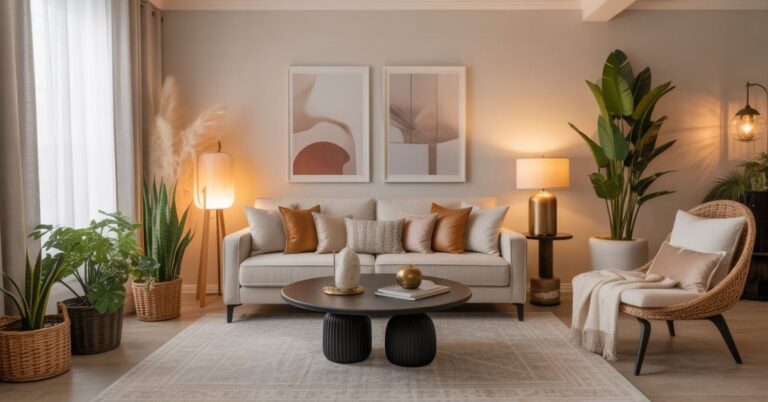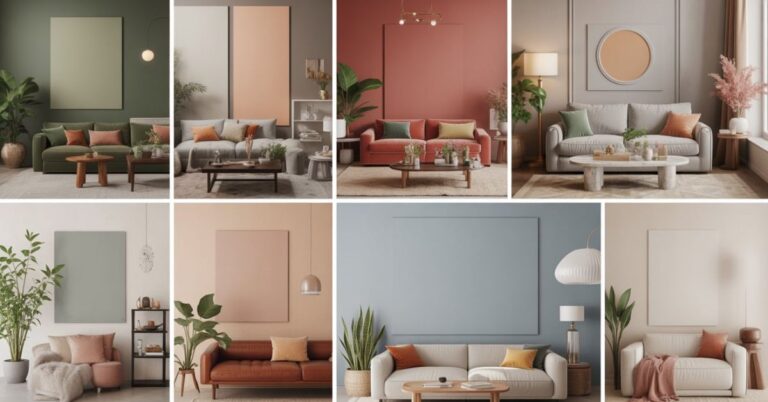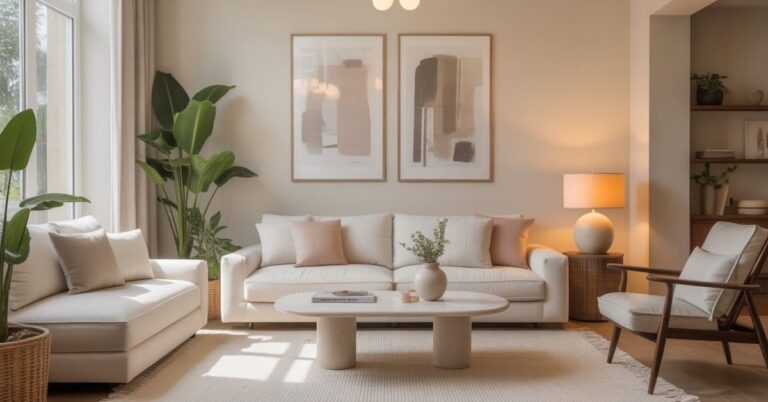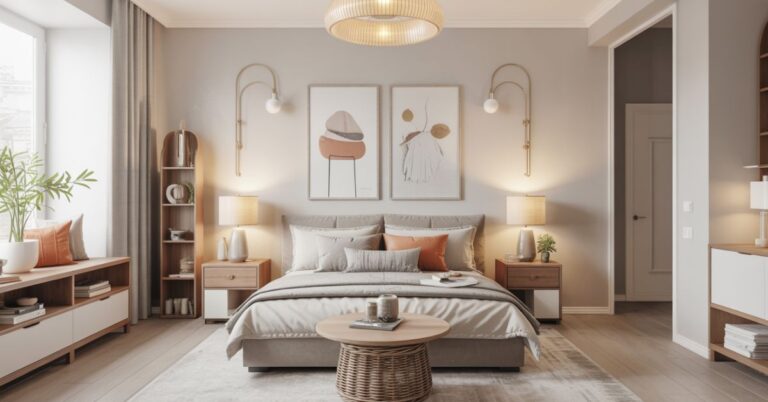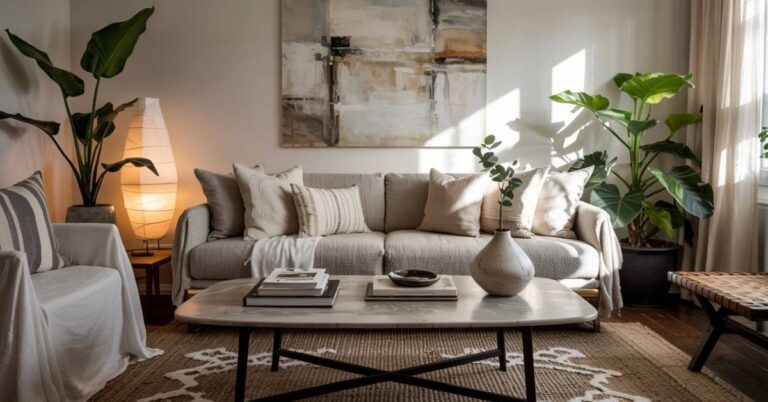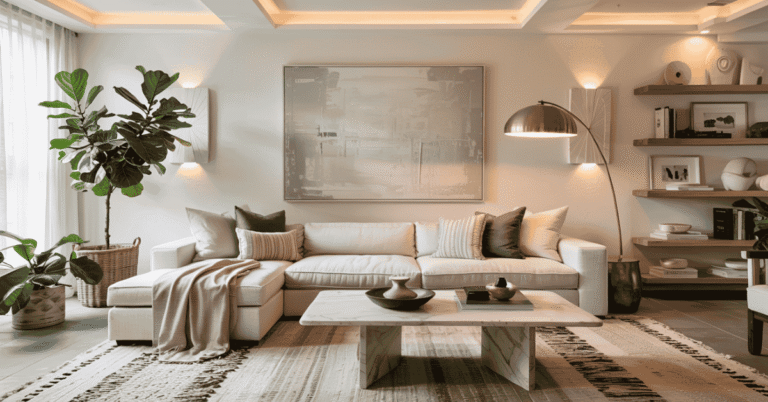Home Design Living Room: The Complete 2025 Guide to Modern Interior Style
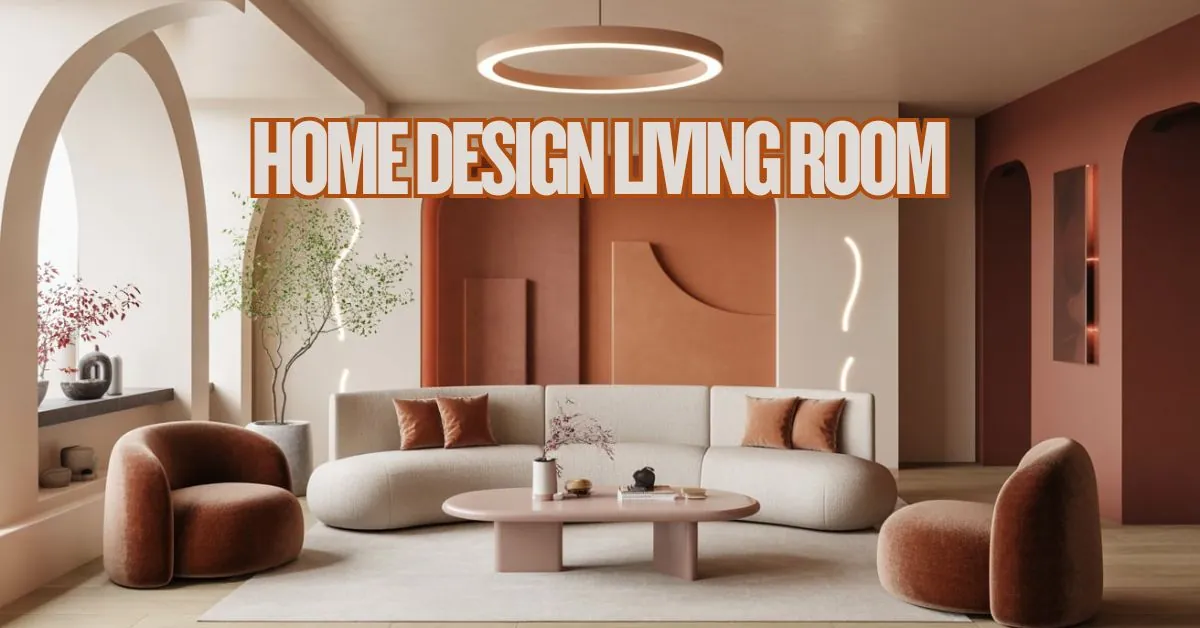
Is your living room stuck in the past while you crave a space that reflects modern sophistication and comfort? Home design living room concepts have evolved dramatically in 2025, moving beyond cookie-cutter layouts to embrace personalized, functional spaces that serve as the heart of contemporary homes. The challenge isn’t just decorating a room it’s creating a cohesive environment that balances style, comfort, and practicality.
Living rooms are poised to become even more personal, more functional, and more formal this year, according to top designers. This shift represents a thoughtful evolution that blends comfort with artistry, structure with softness, and nostalgia with modernity. The problem many homeowners face is navigating the overwhelming array of living room design ideas while staying within budget and maintaining their personal aesthetic.
This comprehensive guide reveals everything you need to master modern living room design in 2025, from trending color palettes to space-maximizing furniture layouts that transform ordinary spaces into extraordinary showcases of contemporary style.
What Makes 2025 Living Room Design Different from Previous Years?
Home design living room trends in 2025 represent a dramatic departure from minimalist philosophies that dominated recent years. Think maximalism, organic shapes, and bold statements as designers embrace richer, more complex visual narratives that reflect homeowner personalities rather than following generic formulas.
Comfort is king in current living room interior design approaches, with plush sofas, oversized cushions, and cozy blankets creating inviting spaces where people can truly relax and unwind. This trend responds directly to growing needs for homes that provide sanctuary from daily stresses, making comfort the primary consideration in furniture selection and spatial planning.
Contemporary living room aesthetics now prioritize substance over trends, focusing on timeless elements that adapt to changing needs rather than following fleeting fashion moments. This approach encourages investment in quality pieces that serve multiple functions while maintaining visual appeal throughout evolving lifestyle demands.
How Do You Choose the Perfect Color Palette for Your Living Room?
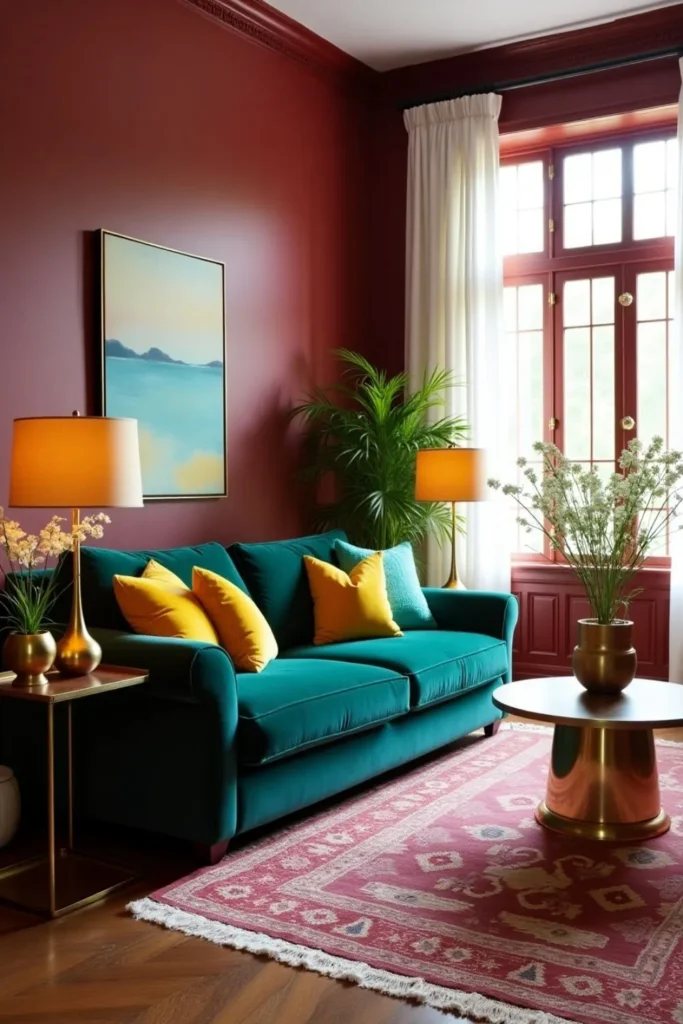
Color selection represents the foundation of successful home design living room projects, setting emotional tone while establishing visual cohesion throughout the space. Rich, jewel-box colors like earthy, forest greens, chocolate browns, and crimson reds like oxblood, black cherry, merlot, and burgundy are finding their way back into interior design after years of neutral dominance.
Bold, saturated colors are making a comeback in 2025, with color-drenched rooms using single hues in varying shades to create cohesive and impactful looks. This trend appeals to homeowners seeking playful interiors that make strong statements while infusing spaces with distinctive personality that reflects individual taste preferences.
Living room color schemes now embrace dramatic contrasts and unexpected combinations that challenge traditional rules. Deep burgundy walls paired with warm brass accents, forest green upholstery combined with cream architectural details, and chocolate brown furniture complemented by jewel-toned accessories create sophisticated palettes that feel both current and timeless.
What Furniture Layouts Work Best for Different Living Room Sizes?
Small living room ideas require strategic planning that maximizes functionality without sacrificing style or comfort. Lighter accent chairs, end tables, and cordless lamps are making waves at design markets because they can effortlessly be rearranged to meet the changing needs of homeowners, offering flexibility that static furniture arrangements cannot provide.
Living room layout considerations must balance traffic flow, conversation areas, and entertainment needs while accommodating storage requirements and natural light patterns. L-shaped sectionals work exceptionally well in square rooms, creating defined seating areas while maintaining open pathways that prevent cramped feelings even in compact spaces.
Modern living room furniture arrangements prioritize versatility and adaptability over rigid traditional layouts. Modular seating systems, nesting tables, and mobile storage solutions allow homeowners to reconfigure spaces for different occasions from intimate gatherings to large entertainment events without requiring major furniture purchases or room renovations.
Read More About : Easy Ways to Style Your Home with Home Decoration Inspiration
Which Seating Options Create the Most Comfortable and Stylish Living Rooms?
Living room furniture selection in 2025 emphasizes comfort without compromising aesthetic appeal. Oversized sofas, deep-seated chairs, and rounded edges are key elements of this trend, blending seamlessly with both modern and traditional design approaches while providing superior comfort for daily use.
Living room sofa choices extend beyond traditional three-seat configurations to include curved sectionals, modular systems, and oversized loveseats that accommodate diverse seating preferences and room configurations. These pieces serve as room anchors while providing flexibility for various activities from movie nights to casual entertaining.
Living room chairs complement primary seating while adding visual interest and additional functionality. Swivel chairs, rocking chairs, and accent seating with bold upholstery create conversation areas while providing alternatives to main sofa seating that accommodate different comfort preferences and usage patterns.
How Can You Maximize Storage Without Compromising Style?
Living room storage ideas must balance functionality with aesthetic appeal, integrating organizational solutions seamlessly into overall design schemes. Built-in shelving, storage ottomans, and multi-functional furniture pieces provide hidden storage while maintaining clean visual lines that support contemporary design principles.
Living room shelving serves dual purposes as both storage and display opportunities, showcasing books, artwork, and decorative objects while hiding everyday items that create visual clutter. Floating shelves, floor-to-ceiling units, and asymmetrical arrangements create architectural interest while maximizing vertical space utilization.
Living room organization strategies focus on creating designated homes for common items while maintaining flexibility for changing needs. Console tables with hidden storage, coffee tables with drawers, and media centers with concealed cable management ensure spaces remain functional without sacrificing the clean aesthetics that define modern interior design.
What Lighting Strategies Enhance Living Room Ambiance and Functionality?
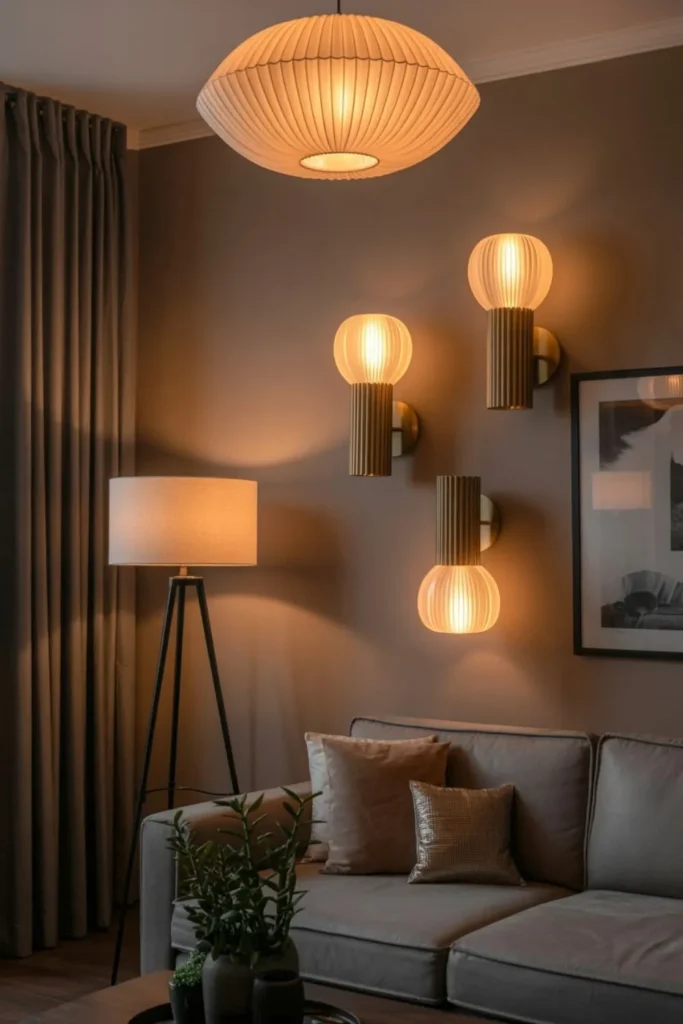
Living room lighting requires layered approaches that combine ambient, task, and accent illumination to create versatile environments suitable for various activities and times of day. Overhead fixtures, table lamps, floor lamps, and wall sconces work together to eliminate harsh shadows while providing adequate illumination for reading, entertaining, and relaxation.
Living room lamps serve as both functional elements and decorative accessories, contributing to overall aesthetic while providing targeted illumination where needed most. Statement floor lamps create visual focal points while providing reading light, while table lamps add warmth and intimacy to seating areas and side tables.
Modern living room lighting embraces smart technology that allows homeowners to adjust color temperature and intensity throughout the day, supporting natural circadian rhythms while accommodating different activities and moods. Dimmer switches, smart bulbs, and automated systems provide convenience while reducing energy consumption.
How Do You Select and Arrange Artwork and Decorative Accessories?
Living room decor requires careful curation that reflects personal style while maintaining visual balance and cohesion throughout the space. Artwork, decorative objects, and textile accessories should complement rather than compete with architectural features and furniture selections, creating harmonious environments that feel both curated and comfortable.
Living room wall art serves as room focal points while expressing homeowner personality and interests. Gallery walls, oversized statement pieces, and mixed media installations create visual interest while establishing color palettes and style directions that influence other design decisions throughout the space.
Living room accessories include throw pillows, blankets, vases, and decorative objects that add personality and seasonal flexibility without requiring major design overhauls. These elements provide opportunities to experiment with trends, colors, and textures while maintaining investment in larger furniture pieces that define room character.
Read More : How to Transform Any Room with Home Decoration Design
What Flooring Options Work Best for Modern Living Rooms?
Living room flooring selections must balance durability, comfort, and aesthetic appeal while accommodating high-traffic usage and various activities from entertaining to relaxation. Hardwood, luxury vinyl, ceramic tile, and area rugs provide options that suit different budgets, maintenance preferences, and design aesthetics.
Living room rugs define seating areas while adding texture, color, and warmth to hard surface floors. Large area rugs that accommodate all furniture legs create cohesive environments, while smaller accent rugs highlight specific areas or add pattern and color interest to neutral floor treatments.
Modern living room flooring trends favor wide-plank hardwood, polished concrete, and luxury vinyl that mimics natural materials while providing superior durability and maintenance advantages. These surfaces serve as neutral backdrops that support various design styles while providing long-term value and aesthetic appeal.
Which Window Treatments Complement Contemporary Living Room Design?
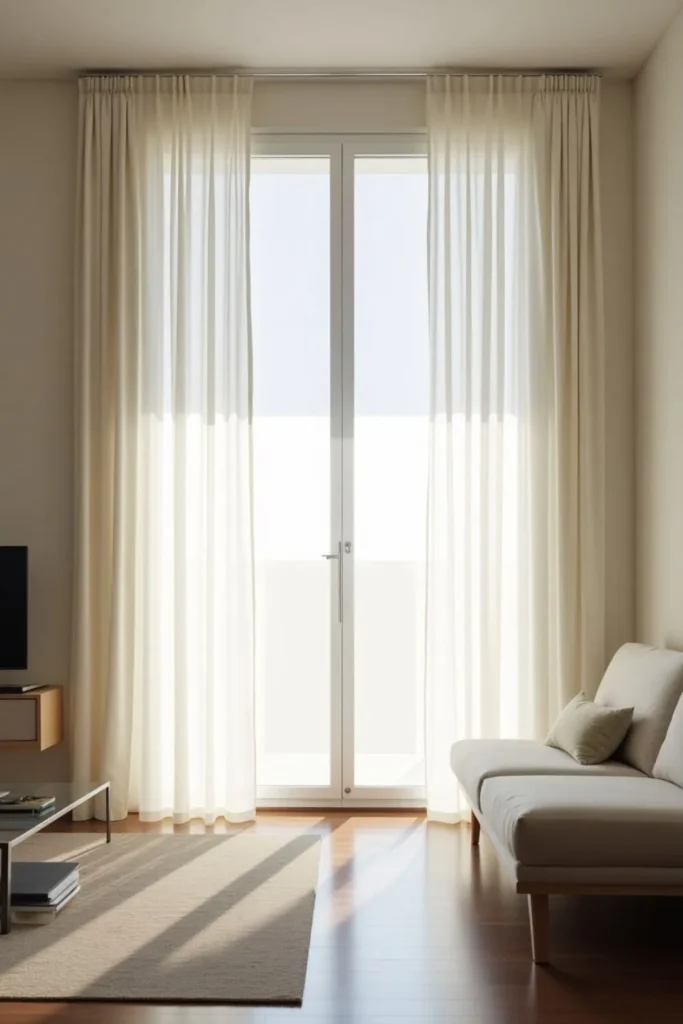
Living room curtains balance privacy, light control, and aesthetic enhancement while complementing overall design schemes. Floor-to-ceiling panels create height illusions and architectural interest, while functional considerations include light filtering, insulation, and exterior view preservation.
Living room windows require treatments that accommodate both daytime and evening needs while supporting the room’s style direction. Layered approaches combining shades or blinds with decorative panels provide maximum flexibility for light control and privacy while maintaining visual appeal throughout different times of day.
Contemporary living room window treatments favor clean lines, minimal hardware, and neutral colors that support rather than dominate design schemes. Motorized options provide convenience while eliminating cord clutter, while energy-efficient materials support sustainability goals and climate control efficiency.
Read More About : Trending Home Decor Decoration Styles You’ll Love in 2025
How Can You Create Zones Within Open-Concept Living Spaces?
Open concept living room design requires strategic space division that maintains flow while creating functional zones for different activities. Furniture placement, area rugs, lighting, and ceiling treatments can define spaces without physical barriers that interrupt sight lines or natural light distribution.
Living room design ideas for open concepts include using large sectional sofas as room dividers, creating conversation areas with furniture groupings, and establishing visual boundaries through color, texture, or pattern changes that signal different functional zones within continuous spaces.
Modern home design embraces flexible zoning that adapts to changing needs throughout the day, with furniture arrangements that support morning coffee routines, afternoon work sessions, evening entertainment, and nighttime relaxation without requiring constant reconfiguration or space limitations.
What Technology Integration Works Best in Contemporary Living Rooms?
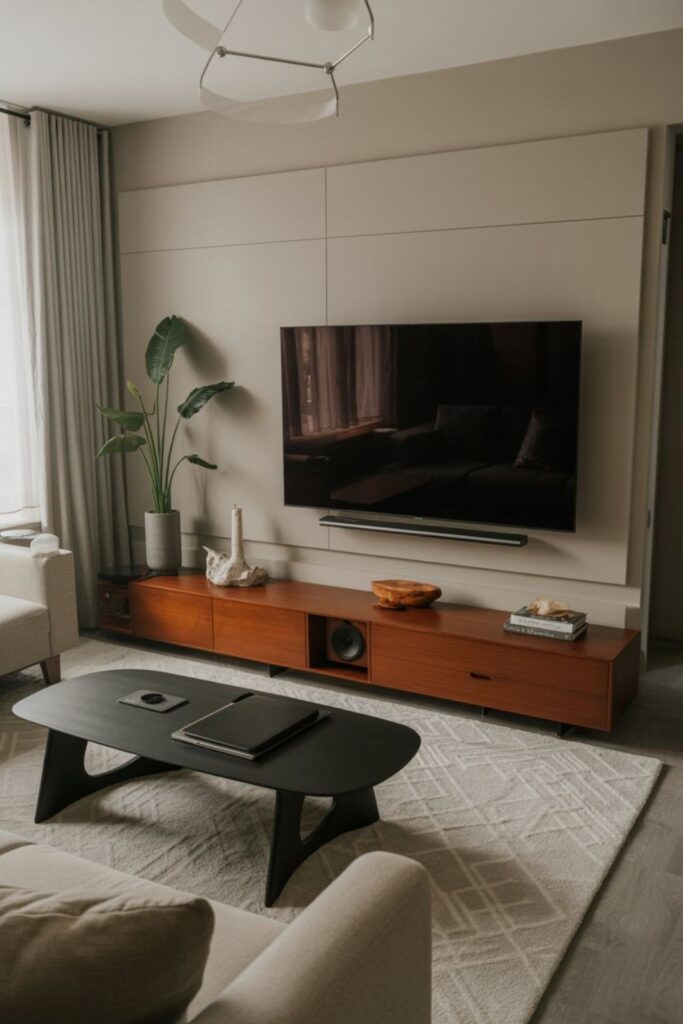
Smart living room features seamlessly integrate technology without compromising aesthetic appeal or creating visual clutter. Hidden wiring, built-in charging stations, and concealed speakers provide modern convenience while maintaining clean design lines that support contemporary interior aesthetics.
Living room entertainment systems require careful planning that balances screen size, sound quality, and furniture arrangement while accommodating various viewing preferences and seating configurations. Wall-mounted televisions, hidden cable management, and wireless connectivity reduce visual clutter while maximizing functionality.
Home design living room approaches now consider technology needs from initial planning stages, incorporating adequate electrical outlets, network connectivity, and equipment storage that supports current needs while anticipating future upgrades and changing technology requirements.
How Do You Maintain and Update Your Living Room Design Over Time?
Living room makeover strategies focus on sustainable updates that refresh spaces without requiring complete overhauls. Seasonal accessory changes, furniture rearrangement, and strategic additions provide evolution opportunities while protecting investments in quality foundation pieces that define room character.
Living room renovation projects benefit from phased approaches that spread costs over time while allowing homeowners to live with changes before making additional modifications. This strategy prevents costly mistakes while ensuring final results truly meet lifestyle needs and aesthetic preferences.
Contemporary living room maintenance requires attention to wear patterns, seasonal cleaning, and preventive care that preserves furniture, finishes, and decorative elements. Regular professional cleaning, protective treatments, and prompt repair attention maintain appearances while extending the life of design investments.
Read More : Fresh & Timeless Home Decor Furniture That Inspires
Frequently Asked Questions
What’s the most important element to consider when designing a living room?
Functionality should drive all home design living room decisions. Consider how you actually use the space entertaining, relaxation, work, or family time then select furniture, layouts, and accessories that support these activities while maintaining aesthetic appeal.
How much should I budget for a complete living room design?
Living room design budgets vary widely based on room size, quality preferences, and scope of changes. Plan to invest 15-20% of your home’s value in main living areas, with furniture representing 60-70% of the budget and accessories, lighting, and decor comprising the remainder.
Can I mix different design styles in one living room?
Modern living room design successfully combines elements from various styles when unified by color palette, scale, or material choices. The key is maintaining visual balance while ensuring each element serves a purpose rather than creating competing focal points.
How often should I update my living room design?
Living room decor benefits from seasonal accessory updates and minor refreshes every 2-3 years. Major furniture and layout changes typically occur every 7-10 years, though quality pieces can last decades with proper care and occasional reupholstering.
What’s the biggest mistake people make in living room design?
Choosing furniture before measuring and planning the space represents the most common home design living room error. Always measure rooms, doorways, and existing features before shopping, and create scaled floor plans to ensure proper fit and flow.
Conclusion
Home design living room success in 2025 depends on balancing contemporary trends with timeless principles that create spaces serving both daily needs and special occasions. The evolution toward more personal, functional, and formal living rooms reflects our changing relationship with home environments and the increasing importance of spaces that truly support well-being and lifestyle goals.
Investment in quality living room design pays dividends through improved daily comfort, enhanced entertaining capability, and increased home value that appreciates over time. Whether embracing maximalist color palettes, incorporating organic shapes, or prioritizing comfort-focused furniture selections, successful living rooms reflect homeowner personality while maintaining the flexibility to adapt to changing needs and preferences throughout the years ahead.

